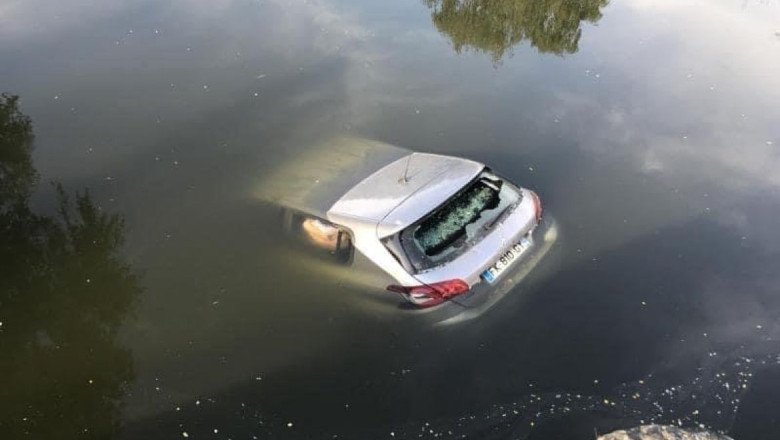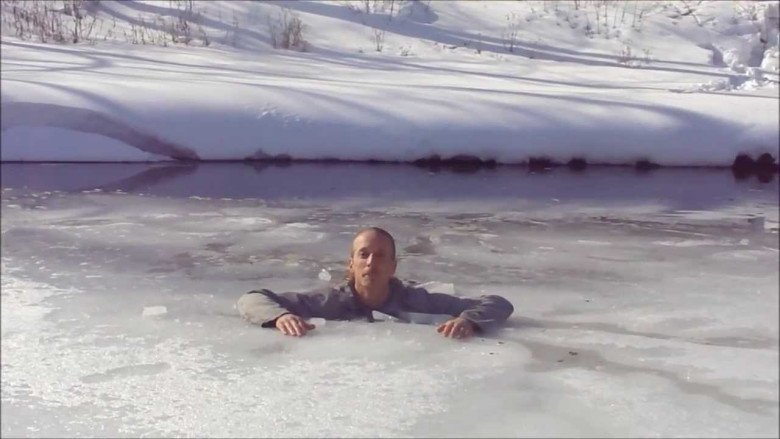
In emergency situations where a vehicle becomes submerged in water, it is crucial to remain calm and take specific actions to maximize your chances of survival. Understanding the correct procedure for escaping a submerged car can be life-saving. Here are some essential tips to keep in mind if you ever find yourself in such a situation.
-
Don't Panic: When you discover that your car is submerged in water, it is natural to feel a sense of panic. However, it is vital to stay calm and focused. Panicking can cloud your judgment and hinder your ability to make rational decisions.
-
Avoid Trying to Push the Door: While it may seem intuitive to push the door to escape, it is essential to conserve your energy. The pressure difference between the inside and outside of the submerged vehicle makes it extremely difficult to open the door by pushing against it.
-
Remove the Head Restraint: The head restraint, typically located at the top of the car seat, can be a useful tool for breaking the window. Remove it and use the metal prongs or any sharp edges it may have.
-
Break the Rear Window: Instead of trying to open the door or roll down the window, focus on breaking the rear window. Most cars are designed to float in water, with the rear window facing upwards when submerged. Breaking the rear window provides an alternate escape route.
-
Utilize the Steel Sharp Tip: Using the metal prongs from the head restraint or any other sharp object, strike the rear window with force. Aim for the corners or edges of the window as they are generally weaker and more prone to shatter.
-
Exit through the Broken Window: Once you have successfully shattered the rear window, quickly swim out through the opening. Remember to leave your belongings behind, as they can impede your escape and slow you down.
-
Swim to Safety: After exiting the vehicle, swim to the surface and then swim away from the sinking car. Avoid going back inside to retrieve any items, as it can put your life at risk.
Being aware of the proper actions to take when trapped in a submerged car can significantly increase your chances of survival. Remember to remain calm, remove the head restraint, and use its steel sharp tip to break the rear window. By following these steps, you can escape the vehicle and swim to safety. Stay prepared and share this information with others, as it could save lives in emergency situations.
The Dangers of Freezing Water: How It Affects the Human Body

When it comes to survival in cold water, understanding the dangers posed by freezing temperatures is crucial. Immersion in freezing water can rapidly lead to hypothermia, a life-threatening condition that affects the body's core temperature. In this article, we will explore the dangers of freezing water and how it affects the human body, emphasizing the importance of taking immediate action to prevent cold water immersion and mitigate its effects.
-
Rapid Heat Loss:
Exposure to freezing water accelerates heat loss from the body at a much faster rate than in cold air. The cold temperature causes blood vessels in the skin to constrict, diverting warm blood from the extremities to protect vital organs. As a result, body heat is quickly depleted, leading to a drop in core temperature.
-
Hypothermia:
Hypothermia occurs when the body's core temperature falls below 95°F (35°C) due to prolonged exposure to cold environments or freezing water. In freezing water, hypothermia can set in within minutes, depending on water temperature and individual factors. The condition progresses in stages:
a. Mild Hypothermia: In the early stage, shivering, numbness, and disorientation may occur. Fine motor skills and cognitive functions are impaired, making it difficult to perform tasks necessary for survival.
b. Moderate Hypothermia: As body temperature continues to drop, muscle coordination becomes severely impaired. Violent shivering, confusion, slurred speech, and difficulty moving are common symptoms.
c. Severe Hypothermia: At this stage, shivering may cease, and the person may appear lethargic or unconscious. Breathing becomes shallow and slow, heart rate decreases, and the risk of cardiac arrest increases significantly.
-
Cold Water Shock:
Immediate immersion in freezing water can trigger a phenomenon called cold water shock. When the body is suddenly exposed to extreme cold, the initial shock can cause an involuntary gasp reflex, leading to the inhalation of water and potential drowning. The shock can also cause an increase in heart rate, blood pressure, and hyperventilation, further contributing to the risk of panic and disorientation.
-
Dexterity and Mobility Impairment:
Cold water exposure leads to the loss of dexterity and fine motor skills, making it challenging to perform tasks necessary for self-rescue. Numbness and stiffness in the extremities can occur, making it difficult to swim or hold onto objects, further reducing the chances of survival.
-
Delayed Rescue and Survival Time:
In freezing water, survival time is significantly reduced. The cold temperatures strain the body's resources, exhausting energy reserves and increasing the risk of exhaustion and unconsciousness. Additionally, the likelihood of rescue may be delayed due to the remote location or unfavorable weather conditions, further diminishing survival prospects.
Understanding the dangers of freezing water and its effects on the human body is vital for anyone who may encounter cold water immersion. Rapid heat loss, hypothermia, cold water shock, impaired dexterity, and reduced survival time are all critical factors to consider. Being prepared, taking precautions, and seeking immediate help are essential steps to prevent cold water immersion accidents and increase the chances of survival in such life-threatening situations.
Coping with Cold and Hypothermia: What to Do After Escaping Freezing Water

Surviving the harrowing experience of escaping from freezing water is only the first step in ensuring your safety. After successfully escaping, it is crucial to understand how to cope with the effects of cold and hypothermia. In this article, we will discuss important measures to take to warm up, prevent further heat loss, and manage hypothermia symptoms to increase your chances of survival and recovery.
-
Get out of Wet Clothes:
Once out of the freezing water, remove wet clothing immediately. Wet clothes exacerbate heat loss and contribute to ongoing cooling of the body. Replace wet garments with dry clothing or wrap yourself in a warm blanket or thermal emergency blanket if available.
-
Seek Shelter and Warmth:
Find shelter from the cold and seek warmth as soon as possible. Look for a heated indoor space, a vehicle with heating, or any other protected area away from the elements. If shelter is not readily available, consider using natural windbreaks or constructing a makeshift shelter using available materials.
-
Warm the Core:
Focus on warming the core of your body to prevent further heat loss and restore normal body temperature:
a. Use external heat sources: Wrap yourself in blankets, clothing, or sleeping bags to insulate and retain body heat. Utilize heating pads, hot water bottles, or heat packs if accessible.
b. Consume warm fluids: Drink warm liquids such as warm water, herbal tea, or warm broth to increase internal body temperature.
c. Avoid alcohol and caffeine: These substances can impair the body's ability to regulate temperature and may lead to further dehydration.
-
Gradual Rewarming:
Avoid rapid rewarming, as it can cause blood vessels to dilate too quickly, leading to complications. Instead, focus on gradual rewarming:
a. Use warm compresses: Apply warm compresses or warm water bottles to the neck, chest, and groin areas to gradually increase blood flow and rewarm the body.
b. Soak in a warm bath: If available, take a warm bath, ensuring the water is not too hot, to gradually raise the body's temperature.
c. Avoid direct heat sources: Refrain from using direct heat sources like heating pads or hot water directly on the extremities, as it can cause burns.
-
Medical Attention:
Even if you begin to feel better after rewarming, it is essential to seek immediate medical attention. Hypothermia can have delayed and severe effects on the body. A healthcare professional will assess your condition, monitor vital signs, and provide appropriate treatment to prevent complications.
Escaping from freezing water is a significant achievement, but the battle against cold and hypothermia continues afterward. Remember to remove wet clothing, seek shelter, and focus on warming the core of your body through external heat sources and warm fluids. Gradual rewarming is key to prevent complications. Seek medical attention promptly to ensure a thorough evaluation of your condition. By following these measures, you can effectively cope with cold and hypothermia, increasing your chances of recovery and a successful outcome.
-
Q: What is hypothermia?
Hypothermia is a condition where the body's core temperature drops below normal levels, usually caused by exposure to cold temperatures for an extended period.
-
Q: What are the symptoms of hypothermia?
Common symptoms of hypothermia include shivering, confusion, drowsiness, slurred speech, weak pulse, and loss of coordination.
-
Q: How can hypothermia be prevented?
To prevent hypothermia, it is important to dress warmly, layer clothing, stay dry, avoid prolonged exposure to cold, and seek shelter in extreme weather conditions.
-
Q: What should I do if someone is experiencing hypothermia?
If you suspect someone has hypothermia, call for medical help immediately. Move them to a warm place, remove wet clothing, and cover them with blankets. Do not attempt to rewarm them with direct heat sources.
-
Q: Are there any risk factors for hypothermia?
Yes, certain factors increase the risk of hypothermia, such as advanced age, alcohol or drug use, certain medical conditions, and prolonged exposure to cold temperatures.
-
Q: How does hypothermia affect the body?
Hypothermia slows down the body's functions, including heart rate, breathing, and metabolism. In severe cases, it can lead to organ failure and death.
-
Q: Can hypothermia occur in warmer climates?
While hypothermia is more common in cold environments, it can still occur in warmer climates due to factors such as immersion in cold water or inadequate clothing.
-
Q: What is the treatment for hypothermia?
Treatment for hypothermia involves gradually rewarming the body, monitoring vital signs, and providing supportive care. Medical professionals should be involved in the treatment process.
-
Q: Are there any long-term effects of hypothermia?
In some cases, hypothermia can cause complications such as frostbite, pneumonia, or cardiac arrhythmias. Prompt medical treatment can help minimize the risk of long-term effects.
-
Q: Where can I find more information about hypothermia?
You can find more information about hypothermia from reputable sources such as the National Weather Service, Mayo Clinic, Centers for Disease Control and Prevention, and American Red Cross.
Sources:
-
The National Weather Service - Hypothermia Safety Tips: Learn about important hypothermia safety tips to protect yourself in cold weather conditions.
-
Mayo Clinic - Hypothermia: Mayo Clinic provides comprehensive information on hypothermia, including its causes, symptoms, and treatment.
-
Centers for Disease Control and Prevention - Cold Stress: Stay informed about cold stress and its effects on the body with valuable resources from the CDC.
-
American Red Cross - Hypothermia: The American Red Cross offers insights into recognizing and treating hypothermia, ensuring your safety in cold weather.
-
Wilderness Medical Society - Wilderness First Aid: Cold Injuries: Discover essential wilderness first aid techniques for treating cold injuries, including hypothermia.
-
WebMD - Hypothermia: WebMD provides in-depth information on hypothermia, including risk factors, prevention strategies, and treatment options.
-
Healthline - Hypothermia: Healthline offers a comprehensive guide to hypothermia, covering its symptoms, causes, and emergency response.
-
OutdoorGearLab - Hypothermia Prevention and Treatment: Find the best tips and gear for preventing and treating hypothermia during outdoor adventures.
-
Safeopedia - Understanding and Preventing Hypothermia: Safeopedia provides a thorough understanding of hypothermia and practical steps to prevent it in various work environments.
-
International Association for Cold Water Boot Camp - Cold Water Survival: Learn essential techniques for cold water survival from the International Association for Cold Water Boot Camp.














